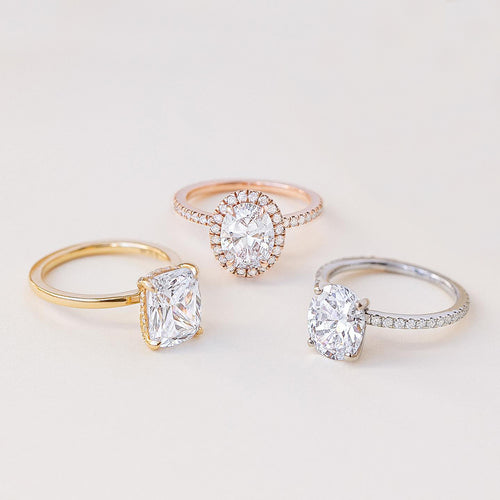Cubic zirconia, with its overly professional name, may not be known to most people. In fact, it is an artificial gemstone comparable to diamonds. It can be seen widely in the jewelry market today because Its appearance and properties are comparable to those of diamonds, but its cost is less than one thousandth of that of diamonds. Do you find it incredible? This article will eliminate your inner doubts and introduce to you what cubic zirconia is, including details of its properties compared with diamonds, and whether it will change color.
Introduction to cubic zirconia
Cubic zirconia, commonly abbreviated as CZ, is a man-made gemstone that looks and has properties very similar to diamonds. Its refraction and clarity make it a favorite among jewelers and consumers in the new era. Mainly because of its very low price, it tempts everyone. Its origin (cubic zirconia) is a laboratory-made zirconium dioxide crystal form. The molecular structure of this crystal makes the internal refractive index of light very high. In natural light, it can shine out a very bright rainbow light, which is widely used in the market and consumption. Used as an economical substitute for diamonds in the eyes of consumers.
How is cubic zirconia made?
CZ is produced in a controlled environment, in which zirconium and zirconium dioxide are heated to extremely high temperatures, wait for the temperature to recede and stabilize, and form crystals. The resulting crystals are cubic zirconia, which is then cut and processed into the market.
Will cubic zirconia change color?
Let me give you a word of comfort first: it will not change color, but some people say that this gemstone will change color because it depends on the environment it is in. A bad environment will generally accelerate the discoloration speed of CZ, so, although It's an economical alternative to diamonds, but there are a few extra precautions and tips you need to know if you want it to retain its luster and color.
- Factors leading to tarnishing
There are many reasons for loss of luster. The environment I just mentioned is very important. Excessive air humidity, body oil, sweat, and ph value will all affect the clarity of CZ, resulting in a decrease in gloss.
- How often does discoloration occur?
2 to 3 years, and if it is worn for a long time without cleaning, grease and fine dust will make it no longer so clear if it comes into contact with CZ for a long time.
- Maintenance of cubic zirconia jewelry
Cleaning Tips
Use a soft-bristled toothbrush, warm water and a little soapy lather to effectively clean your jewelry, and dry it thoroughly after cleaning.
storage tips
If you are not wearing it, it is recommended to put it in a soft cloth bag or jewelry bag to avoid prolonged contact with the air.
avoid contact with chemicals
It is recommended to take it off when swimming, putting on makeup or doing chemical work. Disinfectants in the swimming pool will react chemically with CZ, and chemical reagents such as cosmetics will cause irreversible damage to CZ.
Therefore, if you want CZ to be able to display its gorgeous state for a long time, you must clean it frequently, even diamonds are no exception. Do you think diamonds will not change color? It will. In fact, because diamonds are lipophilic and hydrophobic, and diamonds are not Oil hydrophobicity is the nature of diamonds. Therefore, after wearing diamond jewelry for a period of time, the surface easily absorbs skin oil and becomes dull and hazy.
Final thoughts
Cubic zirconia is likely to become the vast majority of substitutes in the future market, because the price impact of laboratory diamonds has caused a sharp collapse in the price of natural diamonds. In the future, the market value preservation level of diamonds may rapidly depreciate, and laboratory diamonds , Moissanite, and cubic zirconia may expand their market share by then.
Ringsmaker Blog Tips
Readers are welcome to read the message and comments, and give their opinions, we will humbly adopt. Reproduction is prohibited without the permission of Ringsmaker.
Sample lookbook gallery


















